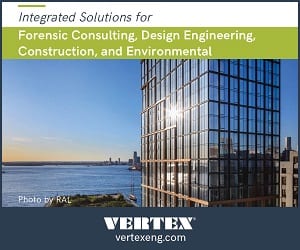The Denver Green Building Ordinance was passed by Denver City Council and is now in effect (formerly known as the Denver Green Roof Initiative). The goals of the ordinance are to help reduce energy consumption, reduce the urban heat island effect, manage stormwater, increase urban biodiversity for pollinators and improve Denver’s air quality. We have been closely tracking this ordinance to help building owners determine the best return on investment when choosing what required measure to adopt.
• Does the ordinance apply to my building? The ordinance applies to commercial buildings over 25,000 square feet that are new builds or re-roofing projects or any building additions greater than 24,999 sf. All new commercial permits over 24,999 gross floor area must comply.
• How do I meet these requirements? The current ordinance gives building owners the option to install a green roof; a green roof and solar photovoltaic combo; cover the entire usable roof space with solar PV; pay a fee-in-lieu; secure a green building certification (e.g., LEED) or Energy Star score of 85 or higher; or be net zero; as well as a few other alternatives as determined by the city of Denver.
There are many qualitative benefits to choosing to install a green roof, but solar PV provides additional economic benefits to the building owner that can deliver an attractive return on investment. Solar PV frequently costs less per square foot than a green roof, weighs less and has the added advantage of reducing your electric bill. Solar PV also generates tax benefits amounting to just over 50% of the cost of the system, potentially all in the first year. Additionally, solar PV represents a significant opportunity to reduce operating expenses, increase your property’s value and help differentiate your business – consumers and tenants show a strong preference for businesses that demonstrate a commitment to sustainability. Solar PV has become the main energy source to address the uncertainty of rising energy costs while helping mitigate the impacts of climate change.
If you’re considering a new roof or a building addition, 2019 is the final year to receive the full 30% federal investment tax credit on a commercial solar panel system. After 2019, the ITC starts to drop until 2022 when it becomes a permanent 10%. Additionally, the Xcel Energy incentive likely will decrease in 2020.
• Can I do the bare minimum to meet these requirements? The ordinance outlines minimum requirements for how much solar PV needs to be installed, but the most prudent investment is to maximize your solar PV capacity given your (or your tenants’) electricity usage and your available roof space. Your project will benefit from economies of scale, offset additional electricity usage, earn more incentive income (monthly checks for 20 years) and potentially see greater benefit on the electric bill from Xcel’s Solar Photovoltaic Time of Use rate class. It’s highly advisable that you seek out a seasoned local solar installer to help you assess your options, solar potential and ROI while also satisfying the requirements of the Denver Green Building Ordinance.
•Can I opt out? Are there any exemptions? Commercial building owners can pay a fee in lieu of adhering to the ordinance. The fee – a payment to the Green Building Fund – is $50 per sf of green space required. Consider that an average 200 kilowatt solar PV system costs roughly $12 per sf of roof and it becomes clear that paying the fee doesn’t make financial sense when you can invest in a more affordable capital energy improvement that reduces operating expense and has an attractive ROI.
Exemptions have been made for projects that completed permit or site plan applications before Jan. 1, 2018, and residential buildings that are less than four stories or 50 feet in height. Commercial greenhouses at grade, temporary structures and air-supported structures also are exempt.
• Can I use C-PACE financing? The Colorado Commercial Property Assessed Clean Energy program allows building owners to wrap the cost of a new roof and solar into C-PACE financing. This means that you can finance your commercial solar system, your new roof and even LED lighting or heating, ventilation and air-conditioning upgrades in one fixed, transferrable, long-term financing package. You can complete your project with no money out of pocket, be cash flow neutral or positive from the first day, while simultaneously creating a positive marketing opportunity and possibly increasing building value though more net operating income.
• What about new construction? If you’re planning a new building or an addition to your building over 25,000 sf, you will trigger the ordinance. Plan to talk to a solar design company that can provide a solar feasibility study or create a preliminary design package that includes an energy production model, a site plan and electrical drawings. You’ll want to partner with an industry expert who will advise the project contractors on additional necessary details like electrical conduit runs, location of gas and utility lines, and the roof’s structural capacity. All too often we’ve seen solar PV design placed last in project planning or building design and this frequently results in errors, incorrect assumptions and increased project implementation costs.
• What are my next steps? To capture these significant benefits, commercial businesses and building owners need an experienced solar project developer with expertise navigating this ordinance and C-PACE. Working with a local installer who has relationships with other energy-efficiency companies will simplify the experience and provide a turnkey energy solution.














